From the Autumn 2023 concern of Dwelling Chook journal. Subscribe now.
A few hours sooner than the first photo voltaic rays of the day pierced the jungle cowl throughout the japanese foothills of the Central Andes mountains, 5 Colombian ladies wielded headlamps and machetes in an ornithological quest for Sooty Ant-Tanagers, White-bibbed Manakins, Magdalena Antbirds, and totally different forest birds. Guided by hen songs, the expeditionaries launched right into a day by day routine of trudging all through muddy slopes and rocky terrain, fortified by the knowledge that they’ve been treading the equivalent path as Elizabeth Kerr—an unsung legend of ornithology who had collected an entire lot of specimens for the famed American Museum of Pure Historic previous hen surveys in Colombia better than a century previously.
Kerr’s determine bought right here as a “revelation” to Juliana Soto-Patiño, one among many Colombian ornithologists on that 2020 expedition, as she was making able to affix an even bigger enterprise to resurvey Colombian birds documented by AMNH ornithologists throughout the early 1900s.
As soon as we found Kerr, it bonded us a lot, because of we didn’t have a [woman] place model for due to this fact prolonged.
Natalia Ocampo-Peñuela, assistant professor, Faculty of California, Santa Cruz.
“It was a shock for us to take heed to a few woman in Colombia, in the mean time, doing fieldwork and collections,” talked about Soto-Patiño, who’s now a PhD scholar on the Faculty of Illinois Urbana-Champaign.
The invention of Kerr turned the inspiration for a particular sort of expedition that went previous a up to date resurvey of Colombian birdlife—one with the added goal to raise up the voices of Colombian ladies in ornithology. The expedition launched in December 2020, comprising eight ladies ornithologists from 4 Colombian evaluation institutions. In 5 days, the workforce documented virtually 90 hen species throughout the Central Andes foothills the place they labored—along with 26 species which have been a match with Elizabeth Kerr’s collections in 1907. Soto-Patiño and her all-women workforce of fellow scientists summarized their fieldwork findings, and highlighted Kerr’s influence, in an article revealed throughout the journal Ornithological Functions in May 2023.
They normally weren’t alone of their mission; in 2019, one different all-women workforce had executed a grueling ornithological expedition throughout the Amazon space of Brazil to pay homage to but another unheralded woman—Emilie Snethlage—who had moreover made pioneering contributions to the scientific data of South American birdlife over 100 years previously.
Every expeditions used topic ornithology throughout the Twenty first century to shine a spotlight on the contributions of women ornithologists. As a result of the Colombian authors wrote of their Ornithological Functions article, they launched their expedition to “recognize, highlight, and elevate the voices and legacies of women which have been systemically saved invisible.”
“By Ourselves, Using Our Private Voices and Minds”
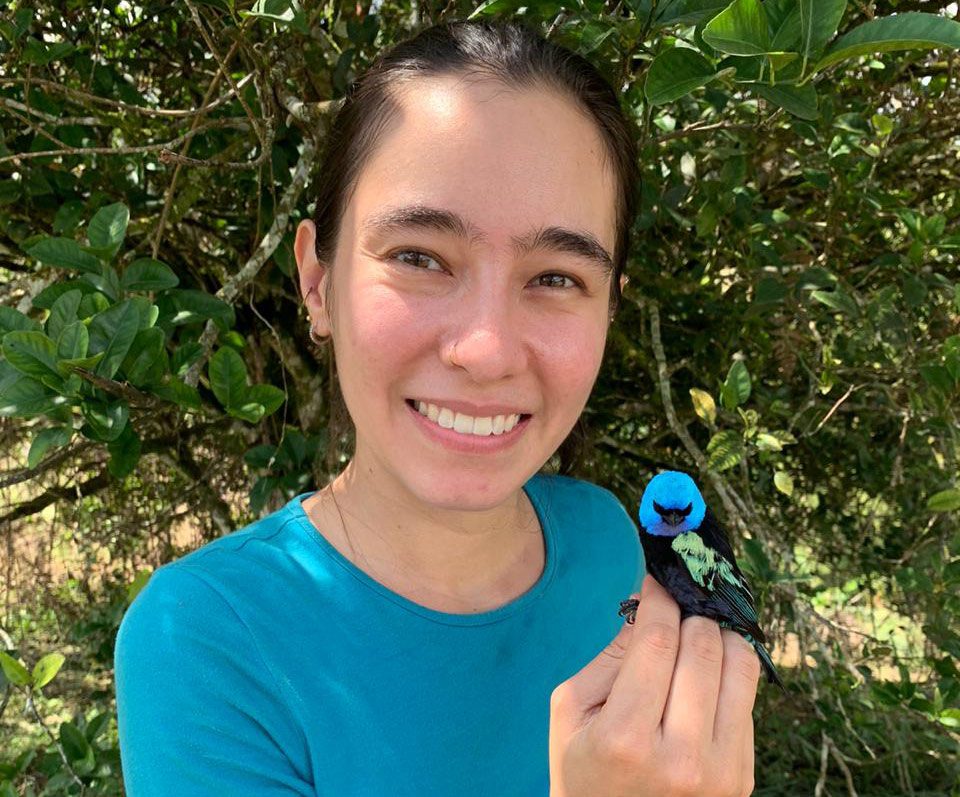
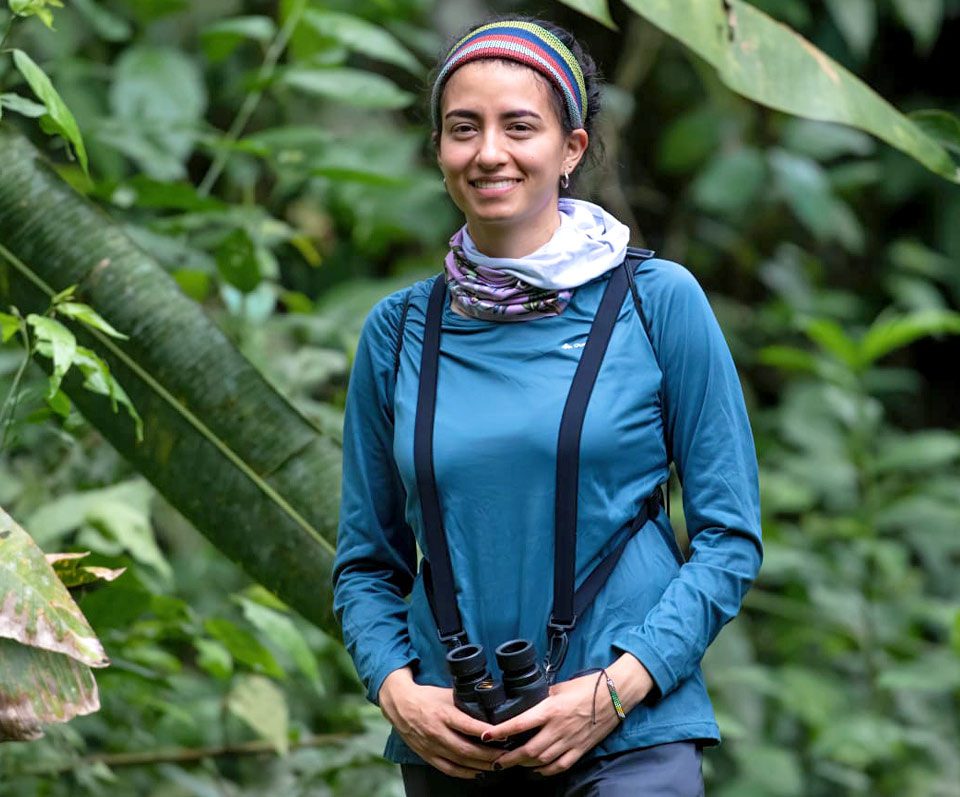
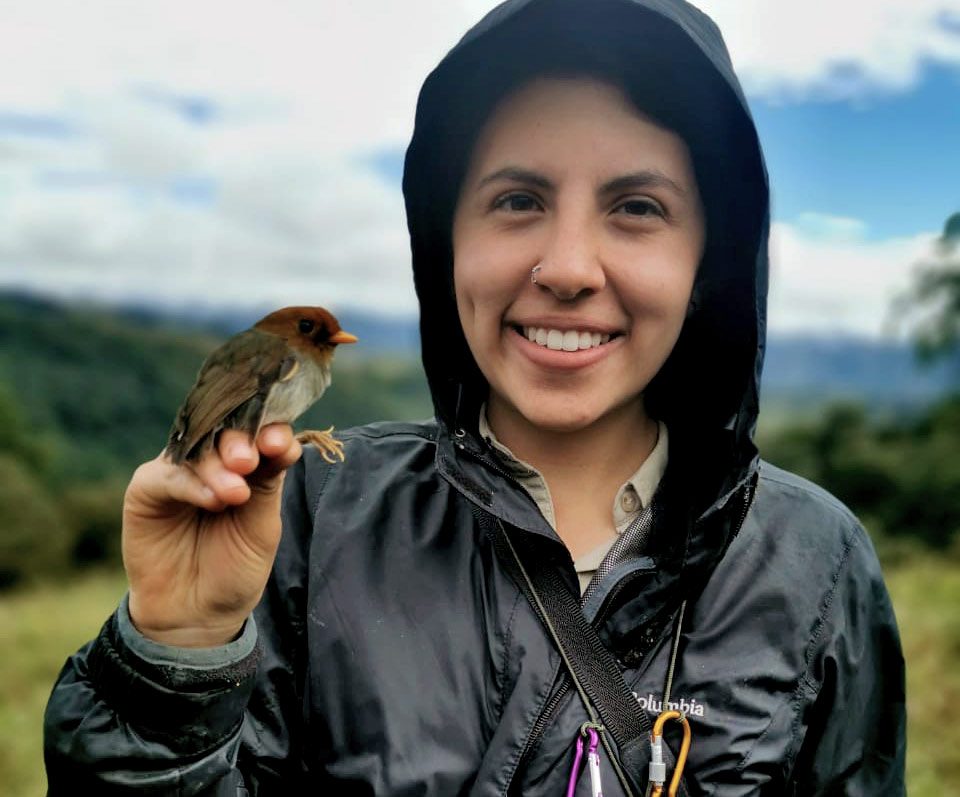
Investigación de Recursos Biológicos Alexander von Humboldt, with a Hooded Antpitta.
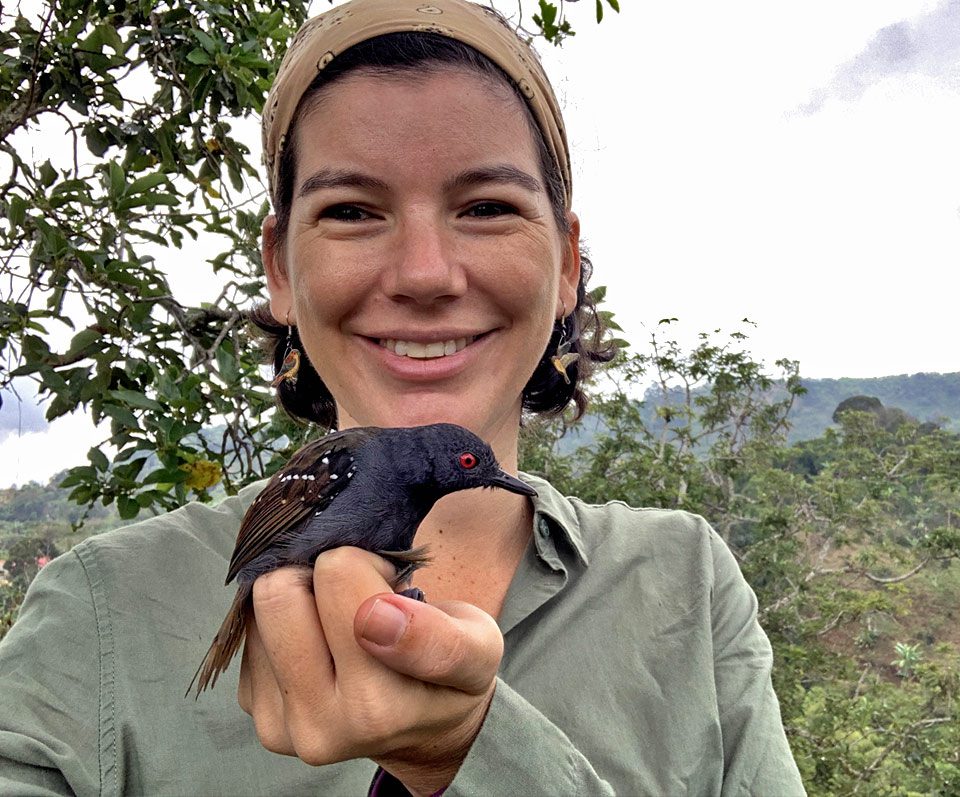
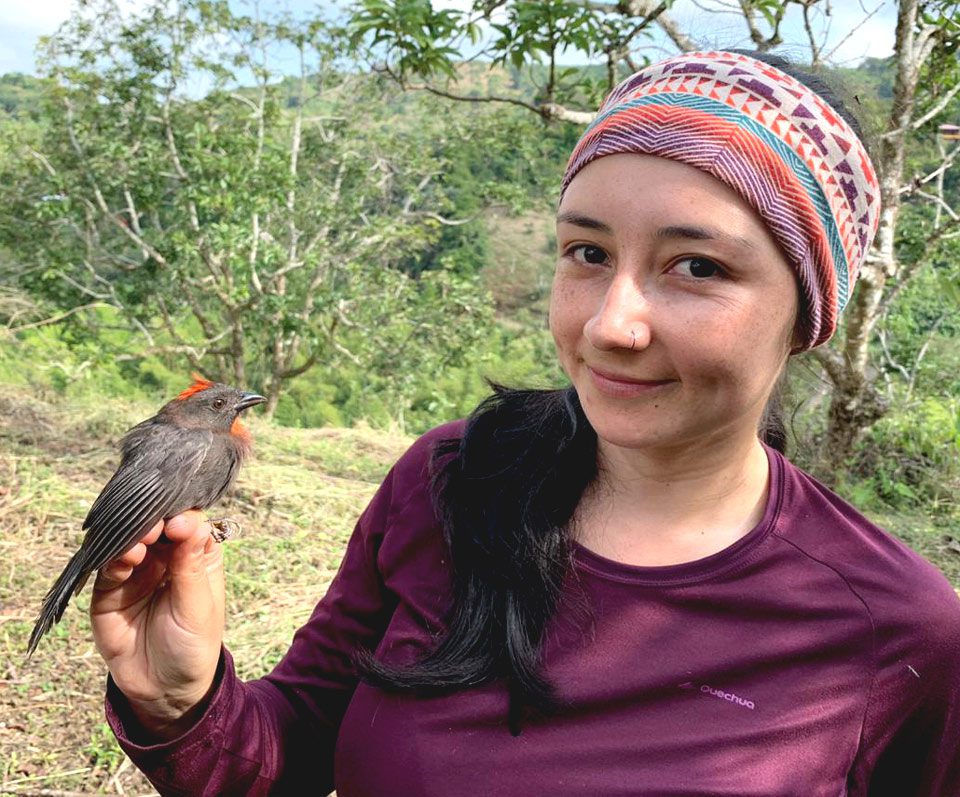
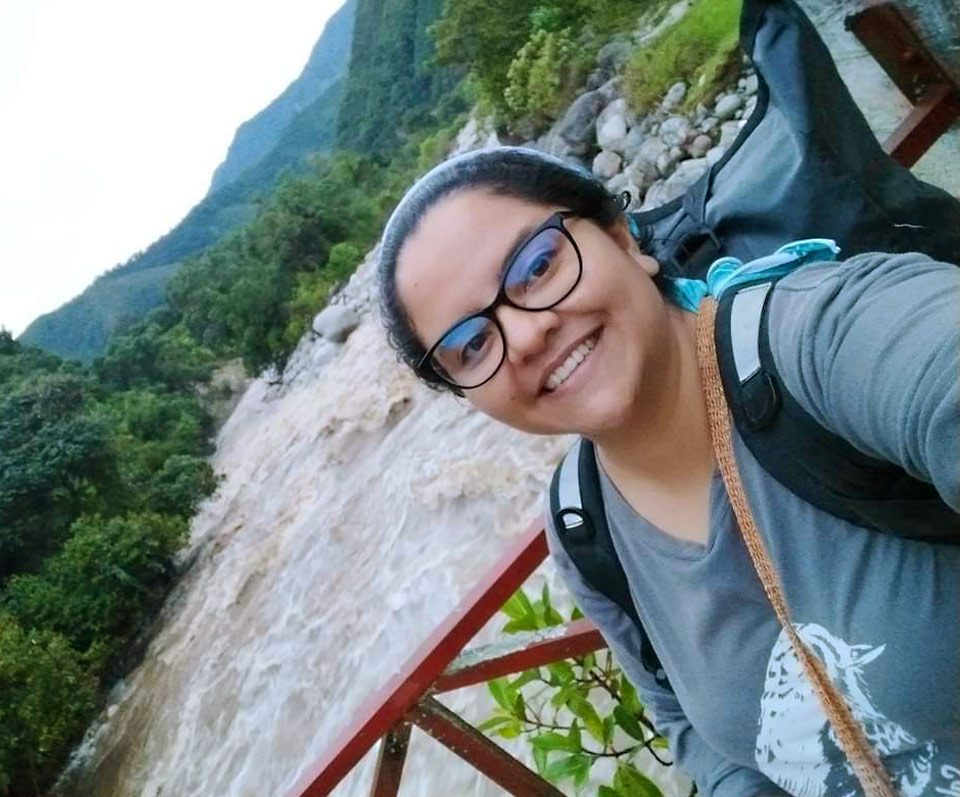
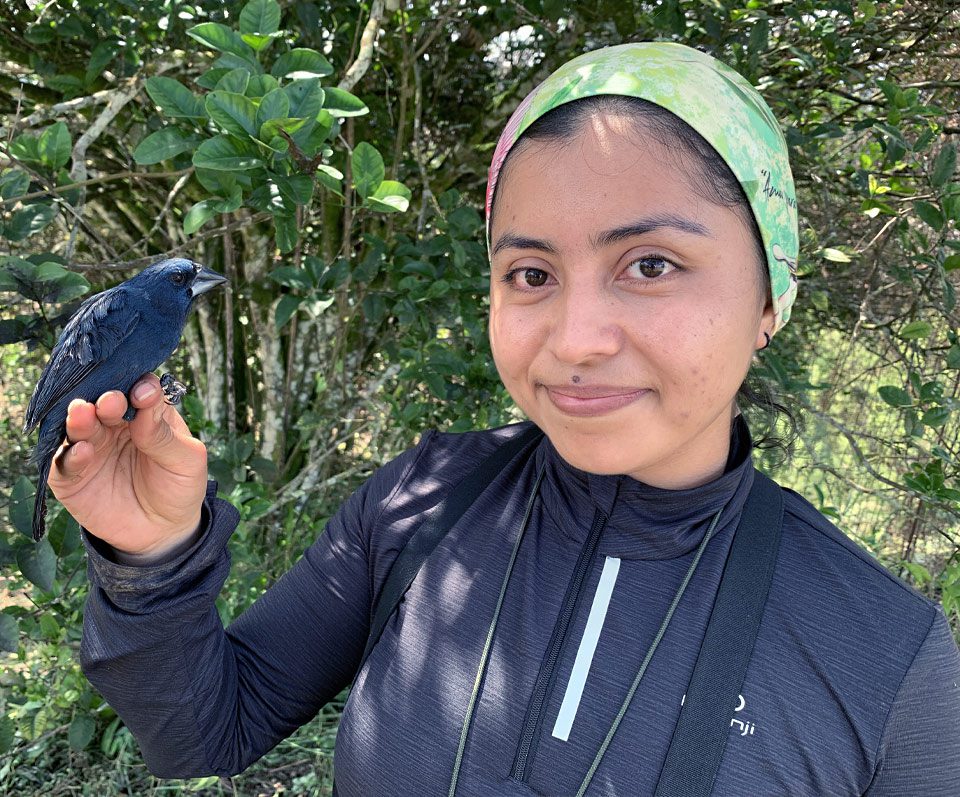
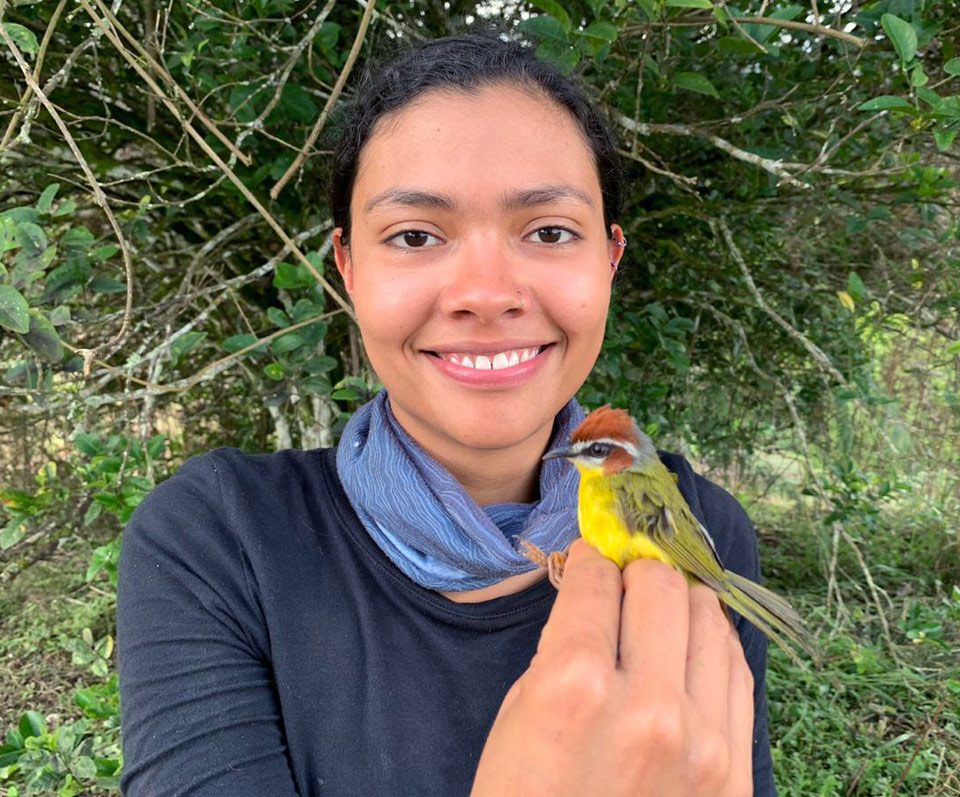
Initially, Soto-Patiño and her colleagues signed up for an expedition beneath the Colombia Resurvey Enterprise, an effort by Colombian universities and evaluation institutions to match Twenty first-century hen species distributions in 5 areas to data from the AMNH surveys throughout the early Twentieth century, as a strategy of looking for potential range shifts or extinctions as a consequence of habitat loss and native climate change. Whereas leafing by the use of the writings of Frank Chapman, the AMNH curator of birds throughout the early 1900s who organized the earlier museum surveys, Soto-Patiño discovered a reference to the “Mrs. Kerr Assortment”—one among many specimen collections that helped Chapman larger understand hen distribution patterns in Colombia. Chapman went on to be thought-about one among many founding figures of latest ornithology, credited with starting the Christmas Chook Rely, whereas “Mrs. Kerr” was relegated to footnotes in Chapman’s revealed work, even though she made distinctive contributions to his evaluation. (Some encyclopedias even assumed there was a typo, referring to a “Mr. Kerr” in its place of Mrs. Kerr.)
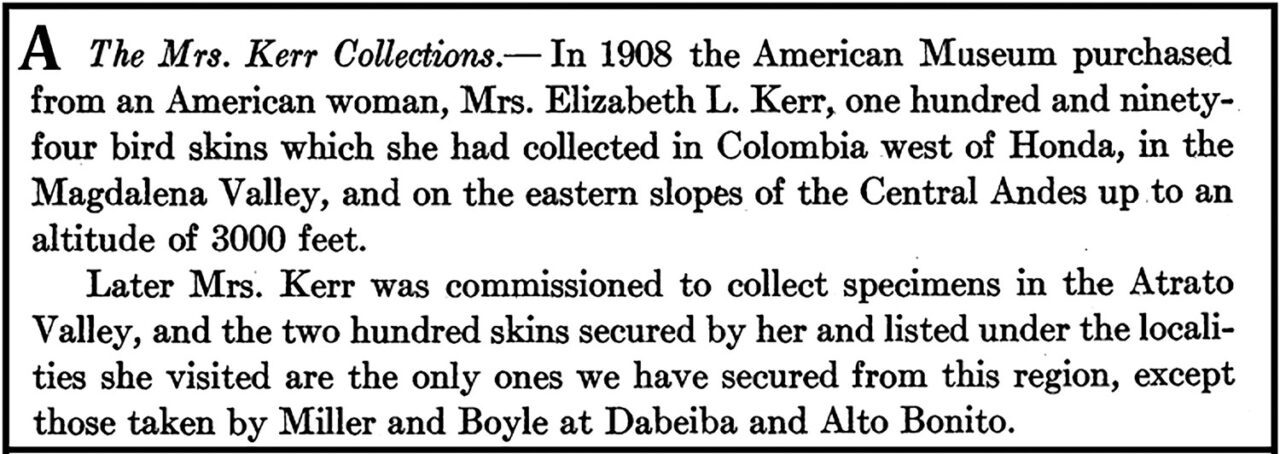
As fellow expeditionary Nelsy Niño-Rodríguez of the Humboldt Institute in Colombia put it, they now envisioned an all-women, all-Colombian leg of the resurvey enterprise—conducting fieldwork and evaluation “by ourselves, using our private voices and minds.”
“As soon as we found Kerr, it bonded us a lot,” talked about Natalia Ocampo-Peñuela, a member of the all-women Colombian expedition who’s now an assistant professor on the Faculty of California, Santa Cruz. “Because of we didn’t have a [woman] place model for due to this fact prolonged.”
Not rather a lot is known regarding the biography of Elizabeth Kerr. In accordance with Niño-Rodríguez, there is only one internet web page about Kerr’s life “written by her private hand,” a self-authored article revealed in Collier’s journal in 1912. In that piece, Kerr referred to her work “throughout the jungles of South America, accumulating unusual tropical birds for museums and private collectors.”
“Usually I see no human being for 3 weeks at a time,” Kerr wrote. “However I’m not afraid. And I just like the jungle.”
Though Kerr wasn’t formally employed on the American Museum of Pure Historic previous, she contributed to Chapman’s work as a contract hen collector. Of their Ornithological Applications article, Soto-Patiño and her colleagues wrote that whereas totally different ladies throughout the early Twentieth century “wore fancy hats adorned with tropical hen feathers” and picked up stuffed birds, Kerr usually labored in stifling rainforests alone in a garb of “bloomers, a protracted capturing jacket, and a rubber hat to protect her from the tropical rains.”
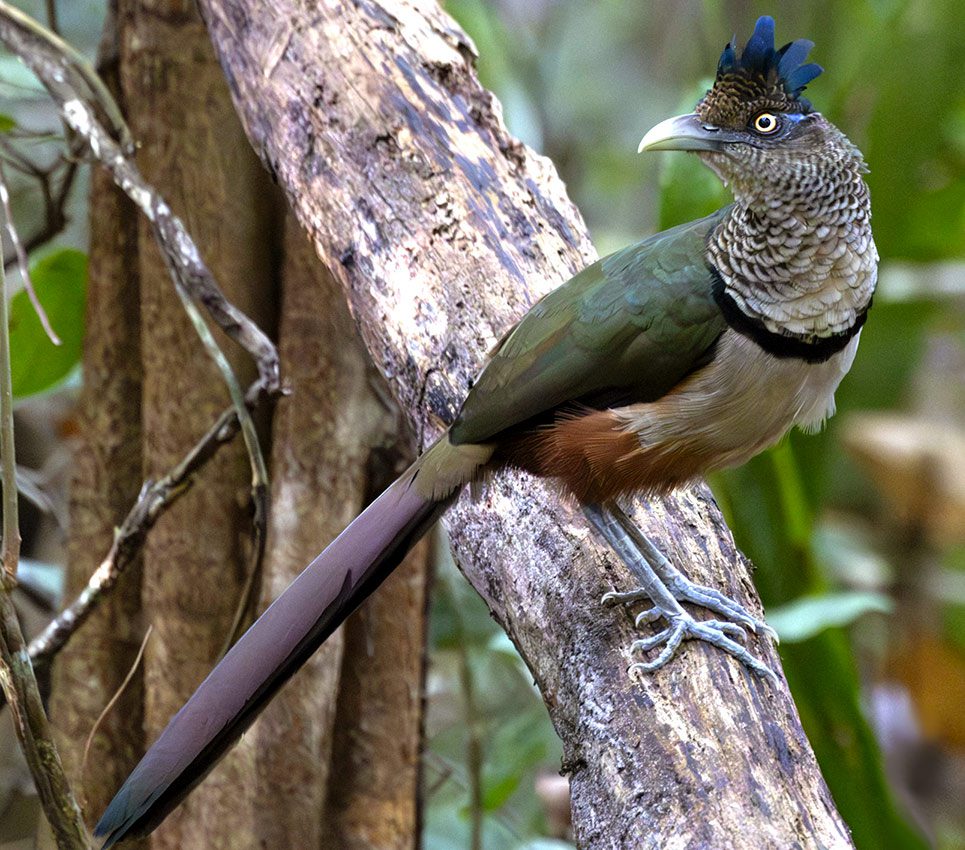
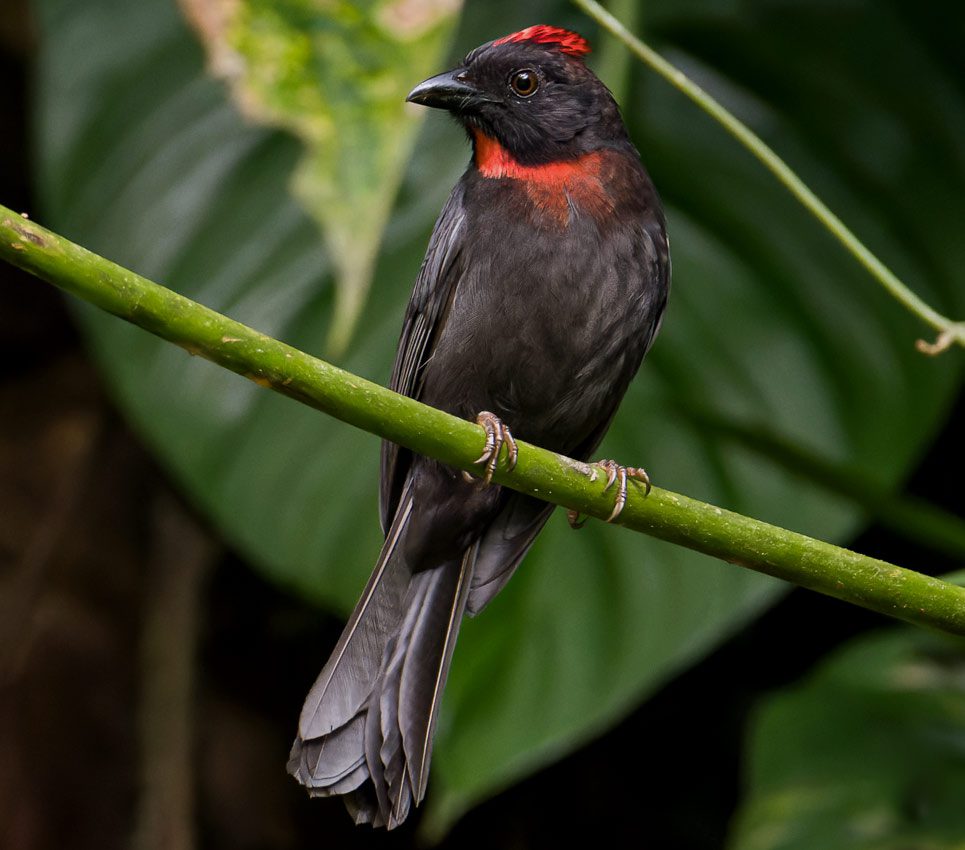
And in accordance with the historic file of letter exchanges between Chapman and Kerr, she moreover labored beneath aggravating expectations by her employer. Their correspondence “was ridden with requires from Chapman for larger collections from Kerr,” Soto-Patiño and her colleagues wrote in Ornithological Functions, “usually anticipating her solo work to fulfill the equivalent necessities as that of expert collectors and even workforce expeditions carried out by the AMNH.”
“Loads of the Chapman–Kerr letters discuss concerning the distinction in specimen prices and the fastened battle between Kerr requesting additional funds for her expedition and Chapman demanding larger outcomes to wire more money.”
Over her in depth travels to Colombia (first between 1906 and 1907, after which from 1909 to 1912), Kerr is credited with submitting 400 specimens of about 200 hen species to the American Museum of Pure Historic previous, along with the one specimen of the Sooty Ant-Tanager throughout the museum in the mean time.
“Kerr’s explorations … keep one among many few investigations of the avifauna of this distant, inaccessible, and incredibly varied territory,” Soto-Patiño and her colleagues wrote in Ornithological Functions. “Her specimens embrace a myriad of species that are robust to take a look at … even the elusive and enigmatic Rufous-vented Flooring-Cuckoo, which has just a few observations in Colombia.”
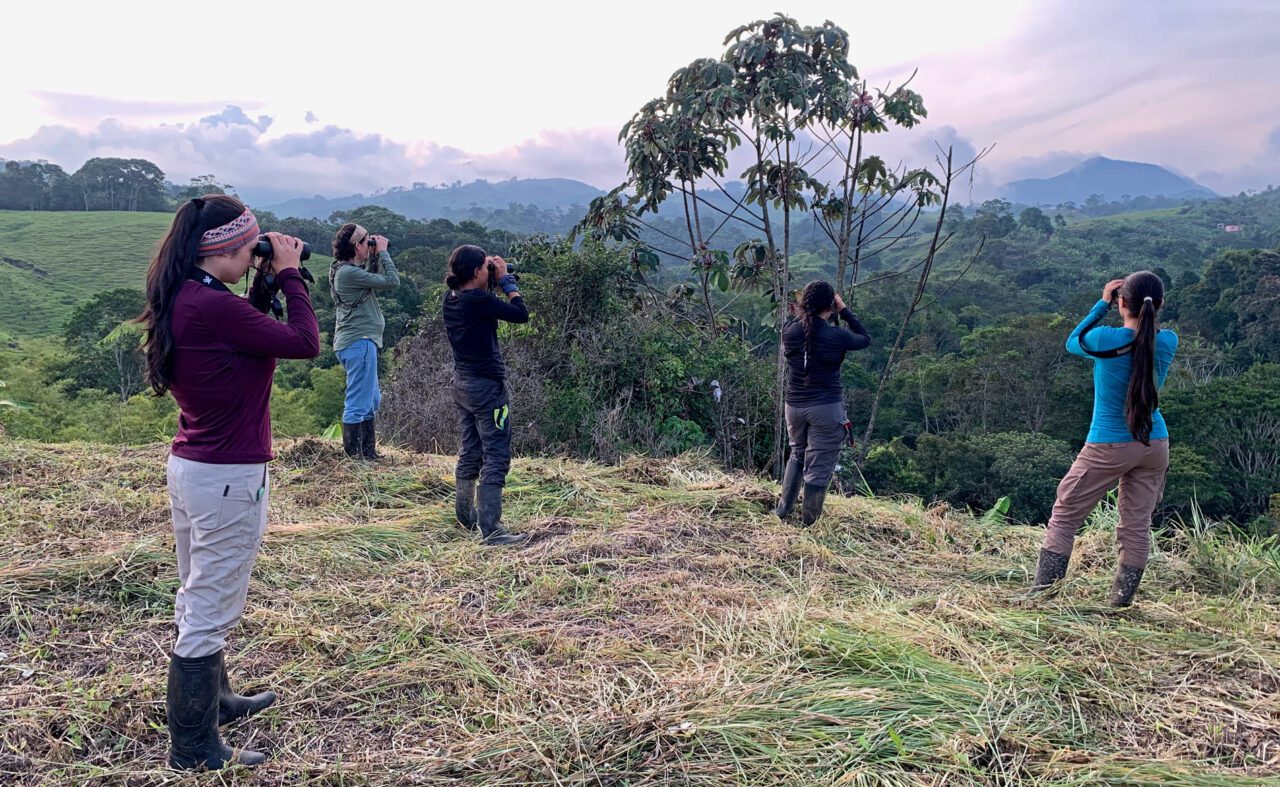
Retracing Elizabeth Kerr’s Footsteps
Based totally on the robust descriptions of Kerr’s first accumulating interval, Soto-Patiño and her colleagues chosen to retrace Kerr’s footsteps throughout the jungles near the town of Fresno throughout the Tolima division of Colombia. Even sooner than they set foot throughout the forest, the expeditionaries encountered biases in opposition to women workers throughout the Twenty first century. Whereas scouting sooner than the journey, Ocampo-Peñuela talked about she encountered remarks like, “Do you even know the way one can use a machete?” Many locals have been curious and receptive to their mission, she talked about, nonetheless some proclaimed the forest to be too dangerous for youthful ladies.
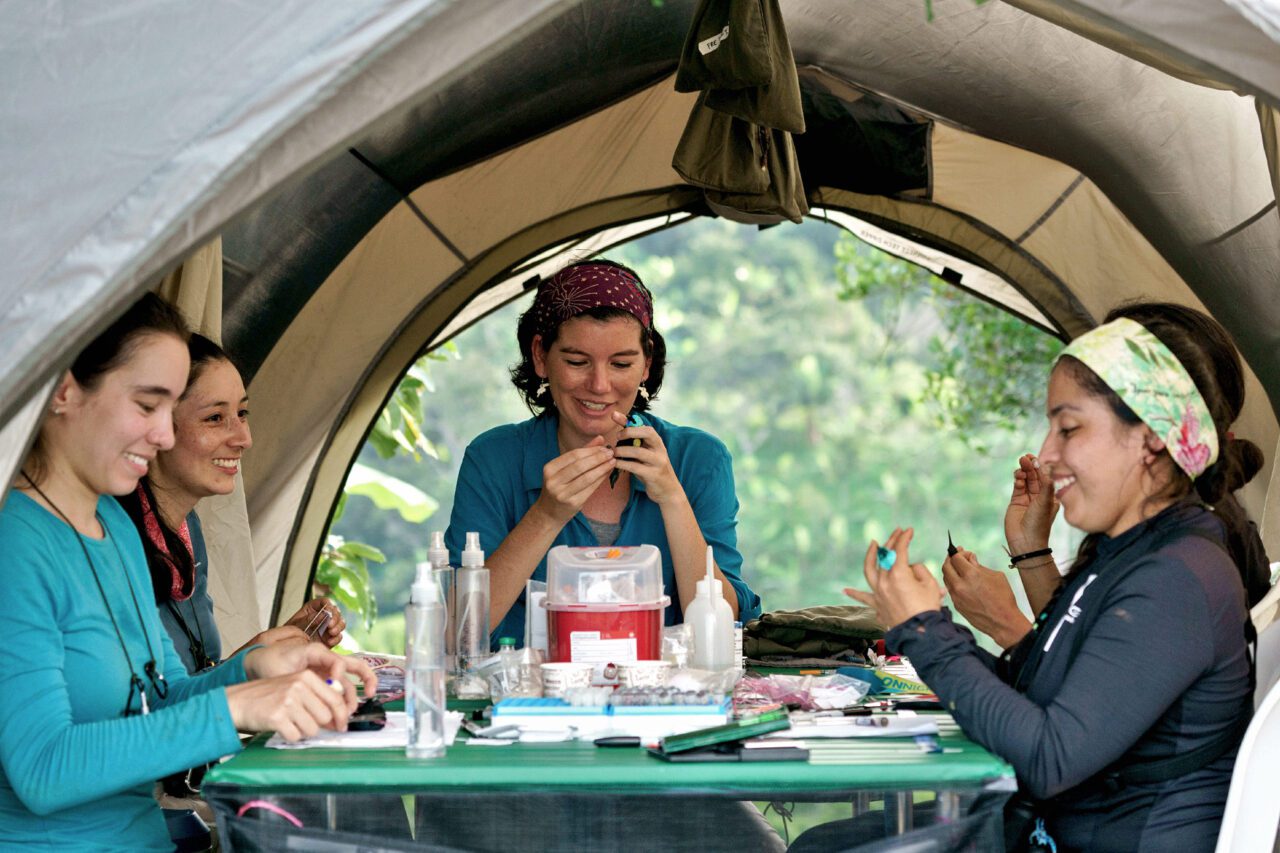
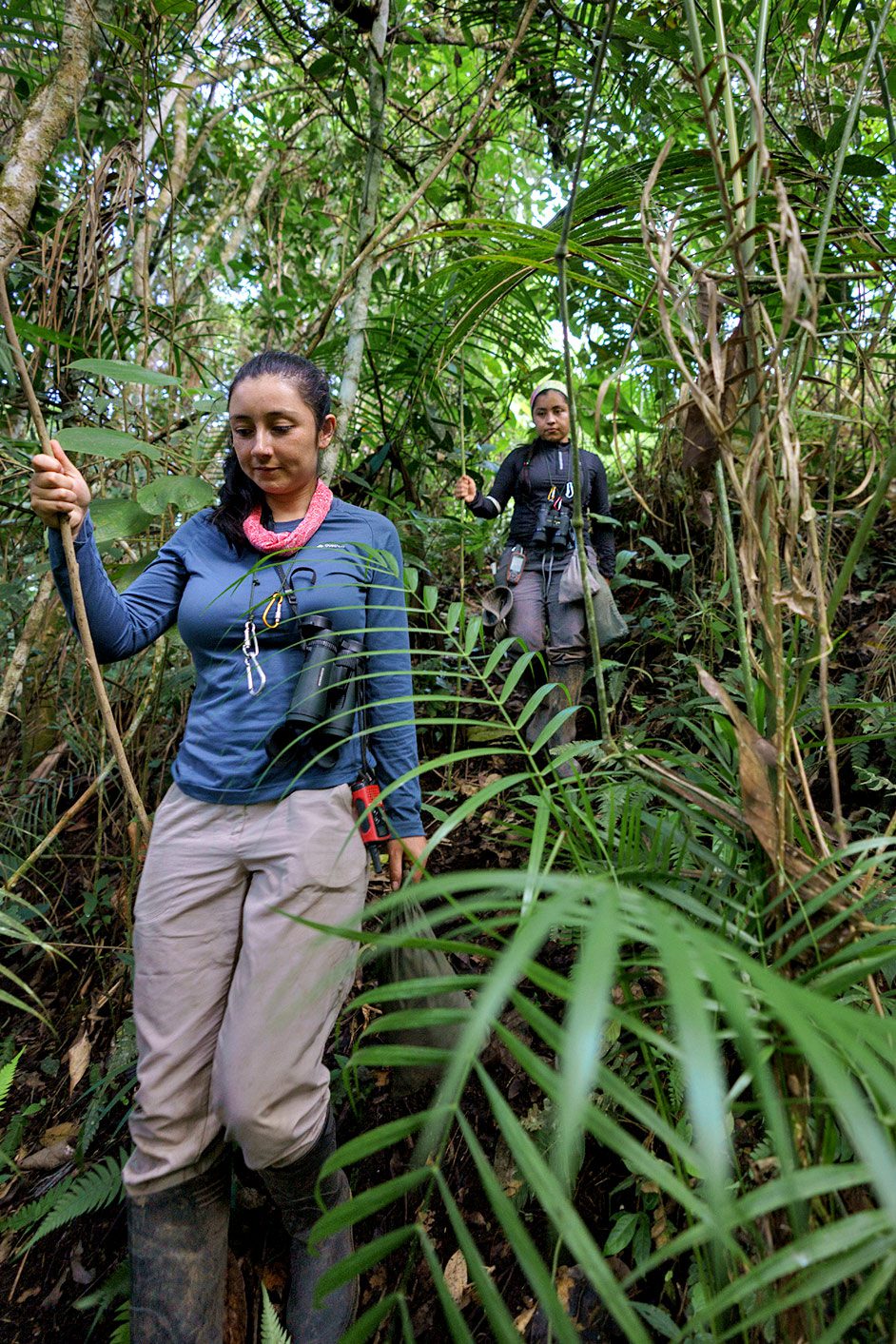
However as quickly as throughout the foothills of the Central Andes, the workforce rose day by day at 4 a.m. from the equivalent hacienda (ranch) that Chapman and his colleagues had inhabited better than a century previously. Each day, they may don headlamps and haul their heavy gear to a cable car—an aerial elevate that linked the ranch to the forest. Whereas some workforce members meticulously organize and checked mist nets to grab birds, others labored at a makeshift topic lab to course of the collected birds. Exhausted nonetheless resolute, they may return to the hacienda spherical 11 p.m.
As a result of the all-women expedition was covered by data outlets in Colombia, photos and video emerged of the women, along with a pregnant Ocampo-Peñuela, working in trying topic circumstances. The pictures on TV crushed the misunderstanding that ladies aren’t suited to grueling ornithological fieldwork, talked about expedition workforce member Jessica Díaz-Cárdenas of the Humboldt Institute.
“You primarily see images of males… going into large dense forest,” Díaz-Cárdenas talked about about typical media depictions of scientific fieldwork in Colombia. “[But] it’s not because of ladies normally should not doing the work.”
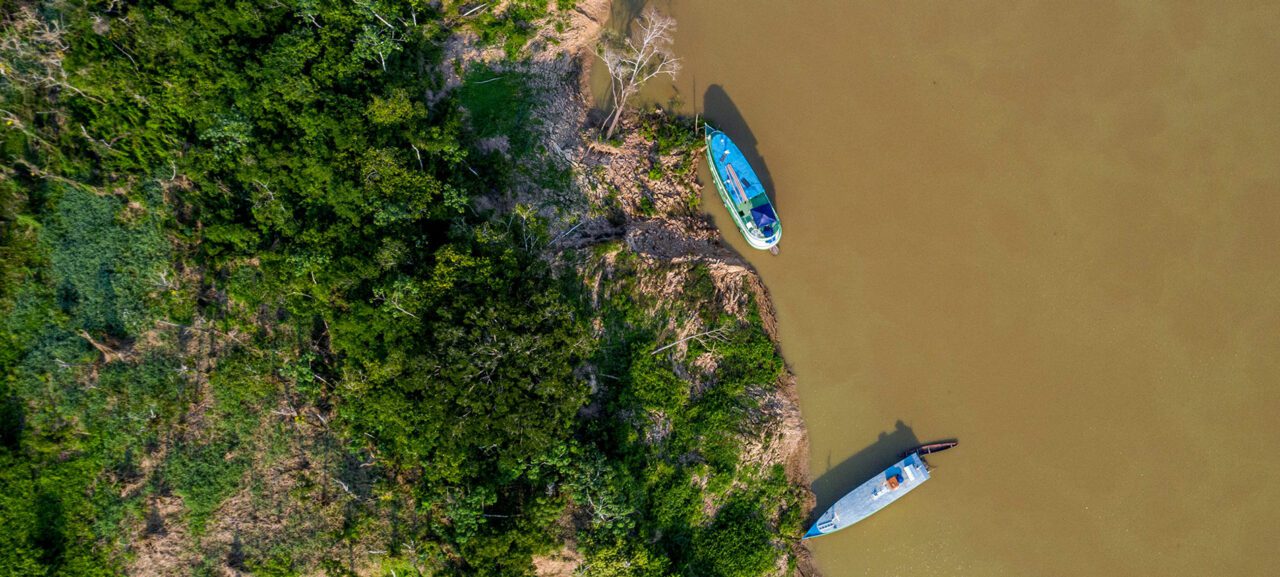
Determining Limitations Alongside Brazil’s Juruá River
A 12 months earlier in Brazil, one different all-women expedition had moreover retraced the steps of a pioneering woman in ornithology—Twentieth-century German naturalist Emilie Snethlage.
Throughout the late 1800s, Snethlage studied pure historic previous on the Faculty of Berlin, the place on the time school pointers mandated that female school college students arrive 5 minutes sooner than the start of classes, sit behind a folding show display screen, and hold there until quarter-hour after the tip of sophistication. Her persistence took her to verify and collect birds alongside Amazonian tributaries in Brazil in 1905, a pursuit she continued until her dying in 1929.
Snethlage was an inspiration to Glaucia Del-Rio, a Brazilian ornithologist and postdoctoral fellow on the Cornell Lab of Ornithology who had had her private career experiences of being excluded from fieldwork alternate options deemed too dangerous for girls. So in 2016 she started organizing a topic expedition to verify birds throughout the Juruá River space—the one fundamental tributary throughout the Amazon River basin that was unexplored by Snethlage—as a way to complete Snethlage’s legacy and highlight her contributions to Brazilian ornithology. The expedition bought right here to fruition in 2019, just a few months sooner than the beginning of the COVID-19 pandemic, and resulted throughout the first full inventory of hen species from the Juruá space, with 429 species recorded. Del-Rio and colleagues wrote about their findings in an article published in the Journal of Ornithology—the equivalent German journal that Snethlage had used to publish her findings over a century previously.
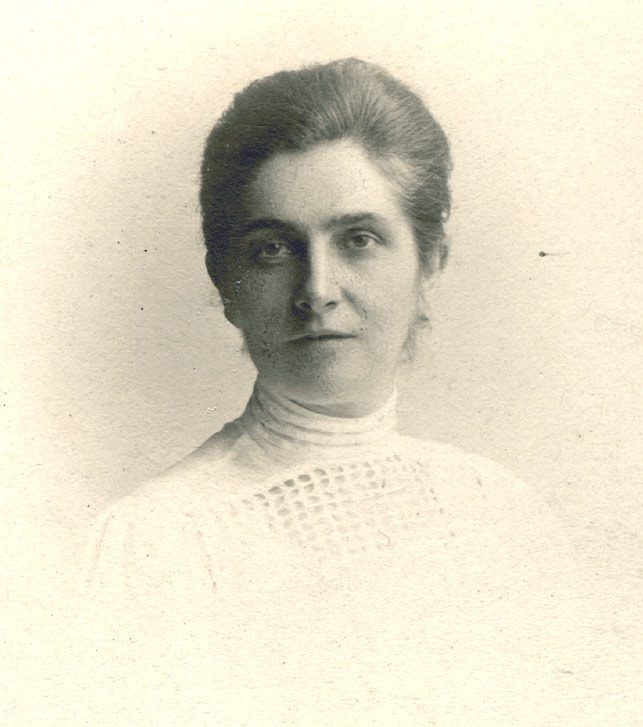
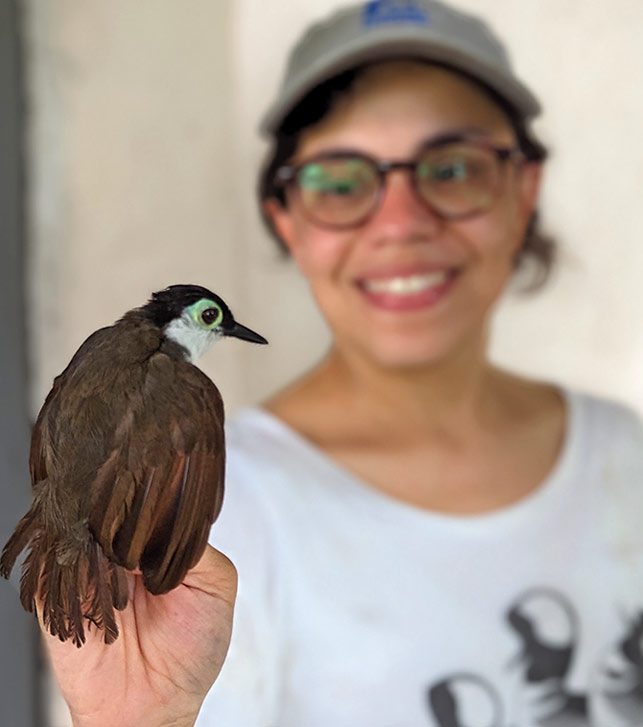
Notably, Del-Rio and her colleagues reported the first proof that the middle Juruá River acts as a barrier for a minimum of 4 species of antbirds. Antbirds inhabit the shadowy understory of forests they normally’re not inclined to fly all through the forest breaks cut back by big rivers. Del-Rio and her workforce found proof that, over a very long time, the antbirds on each side of the river develop minor genetic variations, which is why they’re considered subspecies.
Perhaps appropriately, the workforce discovered the differentiation amongst Black-faced Antbirds by specializing within the females of the species. Whereas the males have been primarily equal on both facet of the river, the females had stark differences in coloration on their throats and underparts.
Marky Mutchler, a PhD scholar on the Faculty of Chicago who joined Del-Rio on the Juruá River expedition, talked about the invention was a reminder of the importance of studying female birds.
“A number of folks don’t check out female birds,” Mutchler talked about, noting that the historic give consideration to male birds is a reflection of male domination throughout the topic of ornithology. “They’re additional so focused on the flashy good males.”
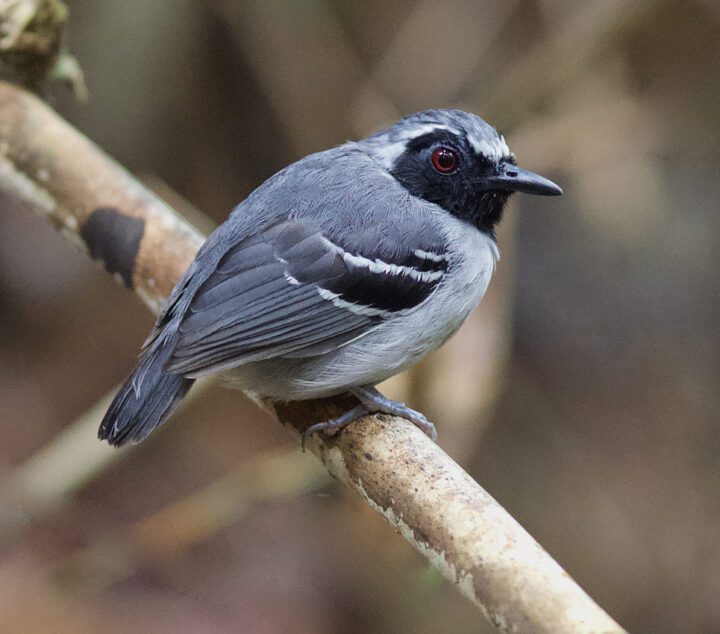
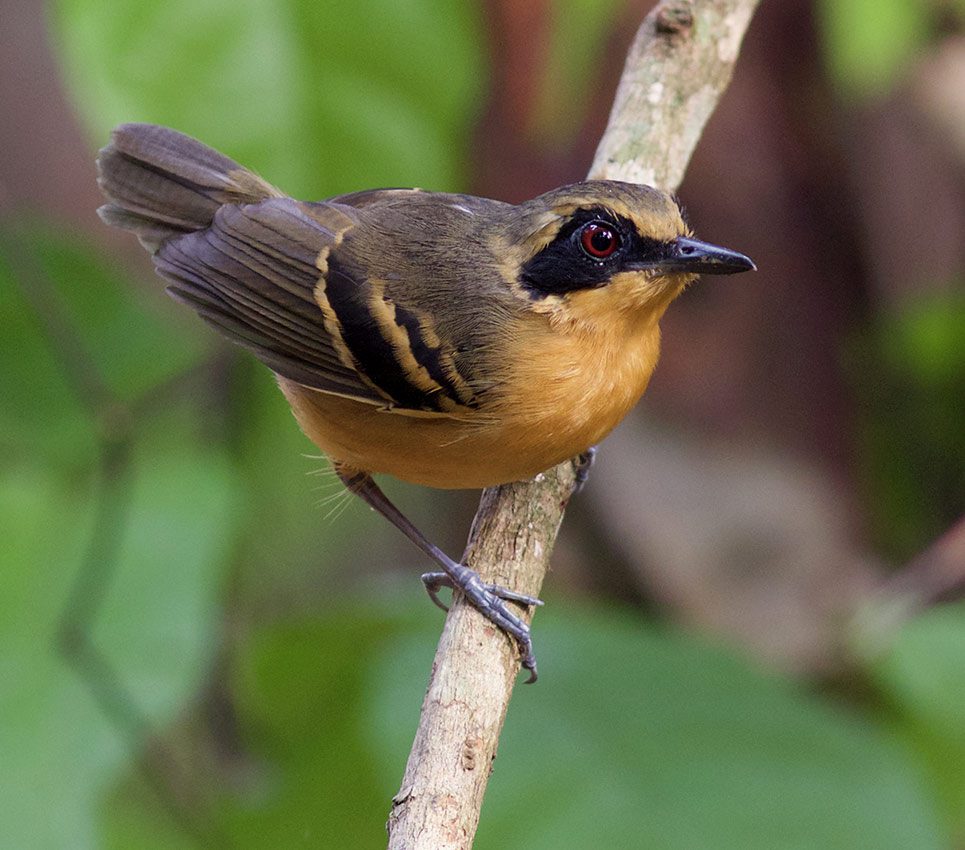
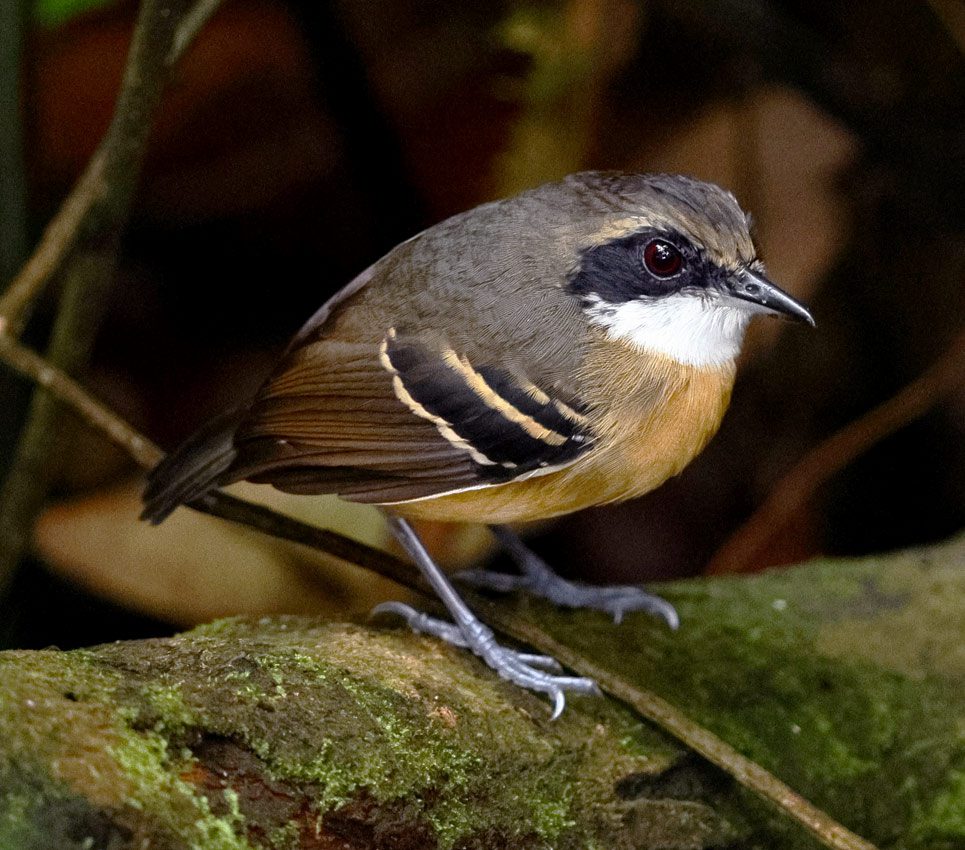
The Colombian expedition honoring Kerr moreover yielded very important findings about antbirds: concerningly, that they’re disappearing. The workforce witnessed swaths of what the AMNH ornithologists 100 years previously had often called an “ocean of forest” wholly cleared away. The deforestation is probably why the Twenty first-century, all-women Colombian expedition not encountered numerous the antbirds that Kerr had collected throughout the Central Andes.
Whereas the two expeditions set milestones throughout the illustration of women in topic ornithology, the expeditionaries on every evaluation teams agree there nonetheless are a great deal of biases in opposition to women in science that persist throughout the Twenty first century. In 2020—the equivalent 12 months that the all-women, all-Colombian expedition launched—an article revealed throughout the journal Nature Communications instructed that female protégés reap additional benefits when mentored by males. In a response published in 2021 throughout the journal Zoologia, Del-Rio and coauthors wrote that “if (and it’s an enormous if)” such a suggestion is true, it’s not owing to “some inherent female disadvantage,” nonetheless to the “present gender-biased system” that privileges male professionals on the expense of the systemic, institutional inclusion of women scientists.
Ocampo-Peñuela hopes that the photographs from the Colombian expedition help to foster such inclusion, by inspiring a “country-wide movement” that opens up pathways for conversations on ladies as mentors, place fashions, and better-recognized pioneers in academia.
“Being surrounded by truly highly effective ladies, I may even see the way in which ahead for Colombian ornithology sooner than my eyes,” Ocampo-Peñuela talked about about her experience with the all-women expedition. “I would love women these images to see themselves as expeditionaries, to know they’ve a job model, and to know that as a girl you’ll be able to do one thing you set your self as a lot as.”
Regarding the Author
Pareesay Afzal’s work on this story as a scholar editorial assistant was made potential by the Cornell Lab of Ornithology Science Communications Fund, with assist from Jay Branegan (Cornell ‘72) and Stefania Pittaluga.
Thank you for being a valued member of the Nirantara family! We appreciate your continued support and trust in our apps.
-
Nirantara Social - Stay connected with friends and loved ones. Download now:
Nirantara Social

-
Nirantara News - Get the latest news and updates on the go. Install the Nirantara News app:
Nirantara News

-
Nirantara Fashion - Discover the latest fashion trends and styles. Get the Nirantara Fashion app:
Nirantara Fashion

-
Nirantara TechBuzz - Stay up-to-date with the latest technology trends and news. Install the Nirantara TechBuzz app:
Nirantara Fashion

-
InfiniteTravelDeals24 - Find incredible travel deals and discounts. Install the InfiniteTravelDeals24 app:
InfiniteTravelDeals24

If you haven't already, we encourage you to download and experience these fantastic apps. Stay connected, informed, stylish, and explore amazing travel offers with the Nirantara family!
Source link

